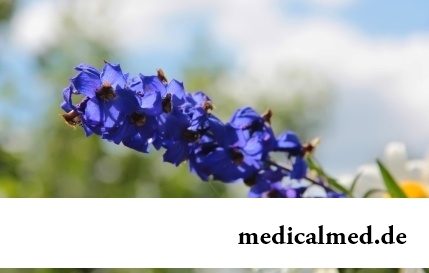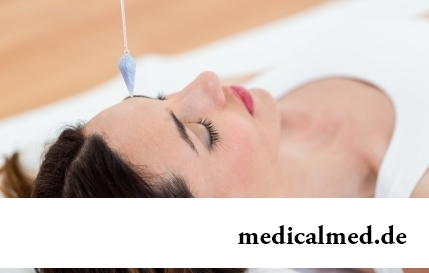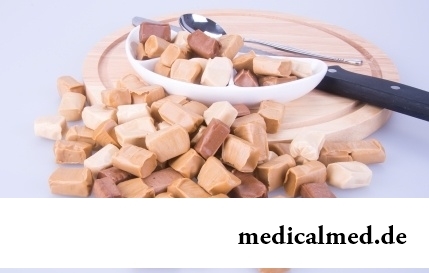





Nitrogen protoxide
Application instruction:
Nitrogen protoxide – narcotic drug for inhalation anesthesia.
Form of release and structure
Dosage form – the gas compressed: colourless, can have a slight specific smell, with the non-inflammable, but sustaining combustion property (on 6,2 kg in metal cylinders with a capacity of 10 l).
Active agent – a dinitrogene oxide, in 1 cylinder – 6,2 kg.
Indications to use
Use of Nitrogen of protoxide is shown:
- The inhalation combined anesthesia in combination with narcotic analgetics and muscle relaxants which is carried out on the special equipment;
- The general anesthesia in operational gynecology, the general surgery, stomatology and for a labor pain relief, not demanding muscle relaxation and deep anesthesia;
- Prevention of traumatic shock, and also for strengthening of analgetic and narcotic effect of other medicines, including a medical analgetic anesthesia after surgery;
- Stopping of a pain syndrome at acute pancreatitis, a myocardial infarction, acute coronary insufficiency;
- Shutdown of consciousness for anesthesia at implementation of medical procedures.
Contraindications
- Pathologies of a nervous system;
- Hypoxia;
- Alcoholism or alcohol intoxication;
- Breastfeeding period;
- Hypersensitivity to drug.
With care drug is used at patients with a craniocereberal injury, an intracranial tumor, increase in intracranial pressure in the anamnesis.
In case of need uses during pregnancy drug appoint in small concentration (in a proportion 1:1 to oxygen) to small time (during 2-3 breaths).
Route of administration and dosage
Nitrogen protoxide is applied in the form of inhalation in a combination with oxygen and other anesthetics by means of the special equipment for a gas anesthesia in stationary conditions.
Usually anesthesia begin 70-80% of a dinitrogene of oxide and 20-30% of oxygen with mix with contents.
The recommended concentration of a dinitrogene of oxide:
- Medical anesthesia during the stopping and prevention of a pain syndrome: 40-75%;
- General anesthesia: a dose for bystry immersion on the necessary depth of an anesthesia – 70-75%, a maintenance dose – 40-50%. In case of need it is possible to add powerful narcotic drugs to mix, including Ftorotanum, barbiturates, ether. After shutdown of giving of a dinitrogene of oxide, 4-5 more minutes, for the purpose of prevention of a diffusion hypoxia are recommended to continue supply of oxygen;
- Labor pain relief: 40-75%, using a method of a discontinuous autoanalgeziya at which the woman in labor begins mix inhalation at emergence of harbingers of a fight and stops at its peak or to the end of a fight;
- Shutdown of consciousness for implementation of medical procedures: 25-50%.
For children concentration of drug are selected individually, at the same time the content of oxygen in mix has to make 30% and more. After end of anesthesia it is necessary to continue inhalation supply of oxygen within 5 minutes for prevention of a hypoxia.
Inhalation anesthesia is carried out against the background of premedication. For the purpose of the prevention of nausea and vomiting, for decrease in contagious excitation and strengthening of action intramuscular introduction of 2-3 ml of 0,25% of solution of Droperidolum (5-7,5 mg), 1-2 ml of 0,5% of solution of diazepam (5-10 mg) is shown.
Side effects
Use of Nitrogen of protoxide can cause side effects in the form of bradycardia, supraventricular arrhythmias, a circulatory unefficiency – during introduction of the patient to a condition of the general anesthesia.
Undesirable effects after an exit from an anesthesia can become: drowsiness, nausea, vomiting, diffusion hypoxia, confusion of consciousness, feeling of alarm, excitement, nervousness, hallucinations, motive excitement. Long use (2 and more than a day) can lead to respiratory depression, dysfunction of marrow (a leukopenia, pancytopenias), to cause a postoperative fever and hyper thermal crisis.
Special instructions
Use of drug needs to be accompanied with control of arterial pressure, heart rate (HR), a cordial rhythm, and also to watch a condition of gas exchange and breath, body temperature of the patient. During an anesthesia it is recommended to pump out periodically gas from a cuff of an endotracheal tube.
Use of Nitrogen of protoxide is shown at treatment of children of chest and advanced age. It is impossible to appoint drug newborn.
The long contact with drug at medical personnel increases risk of development of a leukopenia.
Certain concentration of mix with cyclopropane, ether, Aether chloratus are explosive.
Patients with an alcoholism require purpose of high concentration of a dinitrogene of oxide.
Drug is not used at control of vehicles and mechanisms.
Medicinal interaction
At simultaneous use of Nitrogen of protoxide:
- Amiodaronum – increases probability of arterial hypotension and the bradycardia which is not stopped by atropine;
- Fentanyl and its derivatives – strengthen influence on cardiovascular system, promote decrease in minute volume of heart and ChSS;
- Xanthines – increase risk of arrhythmias;
- Tranquilizers, means for inhalation anesthesia, neuroleptics, narcotic analgetics, antihistaminic drugs – strengthen action.
At a combination drug strengthens effects of diazoxide, ganglioblokator, diuretics, derivative coumarin and the indandion, means oppressing a nervous system and breath.
Terms and storage conditions
To store at a temperature up to 25 °C. To protect from children.
Period of validity – 5 years.
Even if heart of the person does not fight, then he all the same can live during a long period, as the Norwegian fisherman Jan Revsdal showed us. Its "motor" stopped for 4 hours after the fisherman got lost and fell asleep in snow.

Smoking not only exerts a negative impact on the state of health of the consumer of tobacco products, but is a source з...
Section: Articles about health
Heart disease and blood vessels lead to disturbance of blood supply of bodies and fabrics that involves failures in their work, deterioration in health of the person, decrease in its working capacity and standard of living. Annually such perishes from pathologies more...
Section: Articles about health
Frosty air, fresh wind and easy snowball at most of Russians are associated with cheerfulness, health and cheerful entertainments on which our winter is so generous. But, unfortunately, cold season sometimes brings also troubles with health. It is not about seasonal colds and frostbites, and about those chronic illnesses which symptoms are shown preferential in the winter....
Section: Articles about health
Obesity is called by a disease of 21 centuries, for the last 100 years by the number of the people suffering from excess body weight, considerably increased...
Section: Articles about health
It is impossible to imagine human life in which there would be no plants. Practically in each apartment and any production room there are window plants, millions of people with pleasure are engaged in gardening and truck farming, many citizens пр...
Section: Articles about health
The drugs stopping or oppressing life activity of pathogenic microorganisms are widely applied in clinical practice from 40th years of the last century. Originally antibiotics were called only substances natural (animal, vegetable or microbic) origins, but over time this concept extended, and it includes also semi-synthetic and completely artificial antibacterial drugs....
Section: Articles about health
Ability of an organism to resist to adverse environmental factors (to impact of temperature drops, humidity and pressure...
Section: Articles about health
Each person supports all life a SARS about 200 times. The peak of incidence falls on cold season, but it is possible to get sick with a temperature and a pharyngalgia, and sometimes and very possibly, even during a heat. The reasons for development of catarrhal diseases exists множество:...
Section: Articles about health
Water with a lemon - idle time in preparation drink which supporters of a healthy lifestyle already managed to appreciate. Used in a warm look and on an empty stomach, it is one of the most useful prophylactics allowing to prevent tens of diseases and just to raise an organism tone. Especially effectively to use warm water with lemon juice after a serious illness, during a season of the colds, and also to children, old men and pregnant women which do not have contraindications...
Section: Articles about health
Cold is such painful that each sigh becomes a victory, heat "knocks" down, and the ache in joints forces to think only about...
Section: Articles about health
Sooner or later hair turn gray at all. Many people try to hide these changes, returning natural color of the hair by means of coloring, or considerably changing it for the purpose of creation of absolutely new image. All know that the gray hair is a sign приближающ...
Section: Articles about health
The business lady, the become mother, it is necessary to solve an array of problems. But of them is main: how to combine the beloved child and work? What traps trap the working mother and how she needs to behave?...
Section: Slideshow
The name of this disease precisely reflects the problem reason: it consists in the bra fastener pressure upon a certain zone...
Section: Articles about health
Residents of big cities quite often have a disease which is known as the syndrome of chronic fatigue (SCF) today. This illness affects the people belonging to various social and demographic groups and living on all continents. Most of all SHU to a podverzha...
Section: Articles about health
The mankind knows that some toxins at intake in the minimum quantities have therapeutic effect from an extreme antiquity. Many substances recognized poisonous are applied in the medical purposes also today, being the main operating components of the medicines which are officially produced by pharmaceutical industry. Let's tell only about the most known of them....
Section: Articles about health
Such trouble as the milkwoman's attack, at least once in life happened almost to each woman. Prevalence забол...
Section: Articles about health
The problem of diagnosis was and remains to one of the most important in medicine. From that, the reason of an indisposition of the patient will be how precisely defined, eventually success of treatment depends. In spite of the fact that the majority of the diagnostic methods applied in about...
Section: Articles about health
Any person who faced a disease knows that treatment costs expensive. It belongs also to consultations of qualified specialists, and to the diagnostic procedures which are not included in the list of obligatory medical services. The question of cost of medicines is not so unambiguous: almost each drug is produced several producers at once, and the price of medicine can differ many times. In such situation there is a sense to understand in what differ from each other original environments...
Section: Articles about health
All know that self-treatment is dangerous. However absolutely it is almost impossible to do without it. Rate of modern life not on...
Section: Articles about health
Feeding by a breast - the integral part of ideal motherhood allowing to come into contact with the kid and to create to it healthy immunity since early years. Nevertheless, this important process in life of mother and child can be saddened laktostazy − by a delay of milts...
Section: Articles about health
The next flu epidemic leads to the next panic, from year to year we give in on these manipulations: professionally alarming voice of the announcer in news, reports with calculation of the died patients, an interview with people in white dressing gowns and advertizing of anti-influenza means of different degree of inefficiency. All this reminds the Hollywood movies of epidemics threatening to destroy our planet. However, there is also one more similarity to cinema: everything comes to an end well. So, how to deal with the events, not in...
Section: Articles about health
We live during an advertizing era. Daily each person receives a solid portion of persuasive councils about what to eat to be здо...
Section: Articles about health
(Xerostomia) many people consider feeling of a xerostomia small and easily removable inconvenience. This delusion: the symptom can demonstrate existence of serious diseases. It is worth to remember also that saliva performs important functions...
Section: Articles about health
For many spouses the question of planning of a family is one of the main. The problem of the choice of effective and safe contraceptives at the same time comes out on top. Russians still not often resort to operation of a vasectomy extremely popular in the USA, and also in some European and Asian countries. The reason is simple: most of men simply do not possess the complete information about specifics and effects of this procedure. Let's try to meet this lack and to acquaint readers about those...
Section: Articles about health
Not without reason doctors say that 90% of diseases begin or develop because of misoperation of intestines. Disturbance of its functions связ...
Section: Articles about health
For anybody not a secret that the modern person eats not as his ancestors. For the last 100 years in broad access there were absolutely new products which are result of use of the latest technologies in food production. Significantly changed спо...
Section: Articles about health
Practice of hypnotic impact on consciousness of the person contains about two millennia. During this time scientists managed to learn a lot of things about a phenomenon of hypnosis and learned to facilitate a condition of the patients having heavy illnesses with its help....
Section: Articles about health
